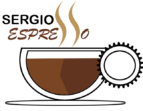Introduction
Preparing for a product management interview at a FAANG company can be a rigorous endeavor. It’s not merely about demonstrating technical expertise but also about showcasing your ability to design innovative features that can benefit users and align with the company’s goals. To ace these interviews, understanding how to structure your responses using established frameworks is crucial. In this blog post, we delve into a pertinent question that could arise: how to build a Facebook product for blood donation. Let’s unpack this question using systematic methods from ‘Decode and Conquer: Answers to Product Management Interviews.’
Detailed Guide on Framework Application
For approaching the design of a Facebook product for blood donation, we will utilize the CIRCLES Method™, a popular product design framework.
- Comprehend the Situation: Begin by understanding Facebook’s position in the market and its user base. Recognize that Facebook connects people and drives social impact, which sets an ideal stage for a blood donation feature. This aligns with Facebook’s mission to build community and bring the world closer together.
- Identify the Customer: Determine who will benefit from the product. The main users would be individuals in need of blood and potential donors. Hospitals and blood banks are also indirect users.
- Report the Customer’s Needs: Patients need timely access to blood, while donors require an easy and rewarding process. Hospitals need a reliable source of donors to maintain blood supply levels.
- Cut Through Prioritization: Prioritize features by focusing on ease of use, user engagement, and effective matching. For example, a seamless donor registration process would be more critical than integrating gamified elements initially.
- List the Solutions: Solutions might include a simple onboarding process for donors, an alert system for blood requirements, and an efficient matching algorithm connecting donors to local requests.
- Evaluate Trade-Offs: Balance privacy concerns with the need for accessible information. For instance, introducing a privacy policy that explains how donated blood data is used would be vital.
- Summarize Your Recommendation: Recommend launching the feature with core functionalities such as donor registration, alert notifications, and basic matching, then iteratively add features based on user feedback.
In applying the CIRCLES Method™, use hypothetical examples to illustrate how you would execute each step. For example, when identifying customers’ needs, mention a hypothetical scenario where a user receives a notification of a local blood drive event that matches their blood type.
While data points specific to Facebook’s user demographics or public health statistics may not be at your fingertips, use general knowledge to approximate. For instance, considering the global prevalence of anemia, one might argue for the potential high demand for such a feature.
Moreover, effective communication during the interview involves clarity, conciseness, and engaging storytelling. Ensure you articulate the problem and solution clearly, without going into unnecessary technical details, and convey your thought process in a structured manner.
Conclusion
Using frameworks like the CIRCLES Method™ can aid in methodically dissecting and responding to product design interview questions. Remember, building a Facebook product for blood donation isn’t just about introducing a new feature; it’s about creating a community-focused tool that can save lives. Practice using these frameworks to sharpen your analytical and communication skills, and you’ll be well on your way to making a strong impression in your FAANG product management interviews.
